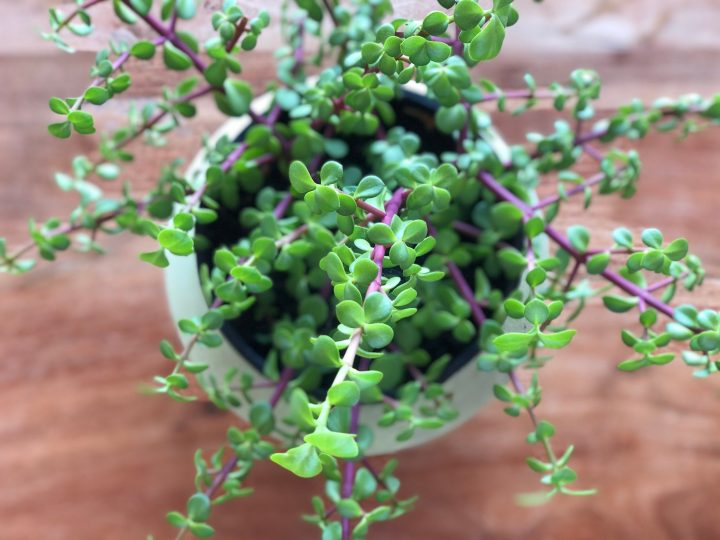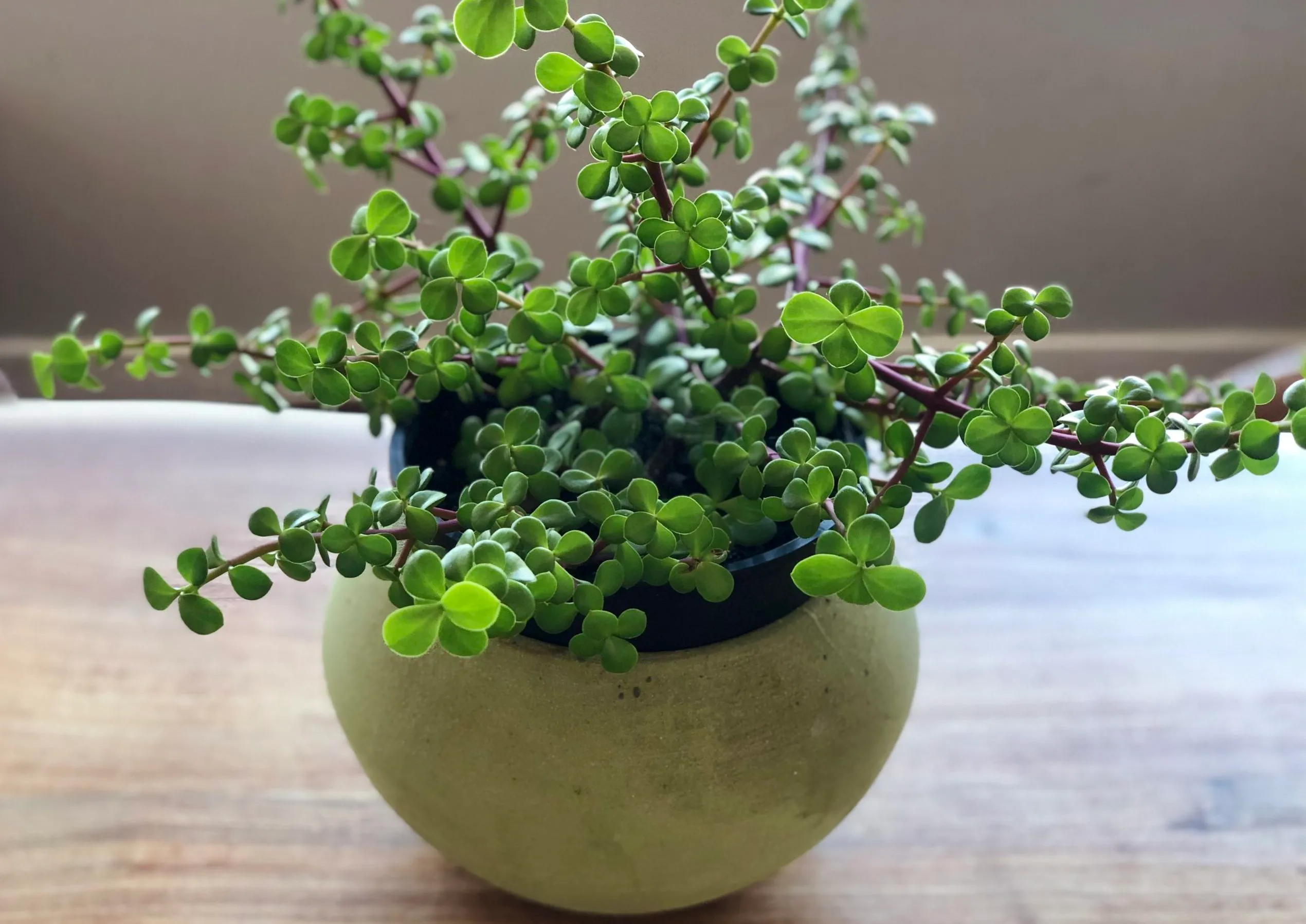GARDENING
The spekboom: Miracle plant or just another succulent?

A succulent plant with tiny round leaves, the spekboom is often praised for its carbon-sequestration abilities.
The spekboom is a succulent plant that can be found in many places throughout South Africa. “It occurs most commonly on warm rocky slopes in succulent Karoo scrub, thicket, bushveld and dry river valleys in the eastern parts of South Africa, from the Eastern Cape northwards into KwaZulu-Natal, Swaziland, Mpumalanga and the Limpopo province as well as Mozambique,” says Dr Anthony Mills, the CEO of C4 EcoSolutions, a consultancy group focusing on the environment and biodiversity.
It has many uses: it can be found as an ingredient in a locally crafted gin, or used in soap, or even used in food, as Bianca Coleman wrote in a 2019 article for Thank God It’s Food, referring to a special kind of velouté made from spekboom.
In addition, and as set out in a September 2009 paper funded, in part, by the Climate Action Partnership, and titled, “Investing in Sustainability: Restoring degraded thicket, creating jobs, capturing carbon and earning green credit”, a careful and strategic use of spekboom can help restore land that has been degraded by “injudicious farming of livestock, mainly through over-stocking with angora goats”.
The same goes for planting spekboom in your garden. Dr Donovan Kirkwood, curator of the Stellenbosch University Botanical Garden explains that “Spekboom is … a fantastic, tough, easy to grow, attractive waterwise plant for the garden, available horticulturally in a range of forms from ground cover to tall shrubs – it’s a great choice for gardens anywhere.”
The succulent is well adapted to dry conditions, which in a water-scarce country such as ours makes it well suited to gardens, helping ease demand on our precarious water resources.
“Spekboom cuttings, unlike cuttings of most other thicket species, have a high rate of survival in the dry, hot soils of degraded thicket… Spekboom is also unusual in being able to grow rapidly in both wet and dry conditions,” says Mills.
“Planted in the correct area, spekboom is indeed a miracle plant. It can root from cuttings even in degraded soils which reach 70°C in summer and which receive no rain for several months on end. These rooted cuttings can then grow into mature plants over 10 to 20 years, allowing the spekboom thicket to regenerate.”
Kirkwood agrees: “In its natural… habitat, spekboom is an important element in maintaining huge natural carbon stores. Degrading, overgrazing or clearing of this habitat, historically or now, results in the release of that carbon store as both soil organic matter and plant biomass decomposes. In terms of actively reducing emissions, that habitat must be conserved… it’s a key ecological element of these systems, and a valuable food source to browsing mammals.”
In fact, the succulent plant is especially known for its alleged “miraculous” carbon sequestration abilities, and the claims that spekboom is more efficient than the Amazon rainforest at sequestering carbon, at more than four tonnes of carbon per hectare.
All plants “capture” carbon through a process called photosynthesis. Mills explains that, “Through photosynthesis, plants use energy from sunlight to convert water and carbon dioxide into sugars and oxygen. The sugars are used to power cellular processes within the plant, as well as to build the physical structures of the plant. In this way, carbon dioxide is ‘captured’ from the atmosphere and stored in plant tissues and the surrounding soil.”
Thus, trying to use plants that can sequester larger quantities of carbon to possibly reduce our country’s – and the world’s – carbon output seems promising.

Image Maverick Life
In a 2020 article for Africa Check, Sarah Wilde notes that, “According to research from 2014, spekboom can capture and store between 2.9 and 8.6 tonnes of carbon dioxide per hectare per year in its above-ground biomass… But this is only under very specific circumstances. The available research shows that these rates were achieved where spekboom was being used in the restoration of a subtropical thicket in its natural habitat with other plants.”
Kirkwood agrees: “If you are planning on planting spekboom outside of the thicket biome it is unlikely that spekboom will be more effective at sequestering carbon than vegetation indigenous to your area.” DM/ML

















 Become an Insider
Become an Insider
Fascinating !
“Spekboom leaves are edible and rich in manganese, cobalt and especially magnesium and it contains micro elements, rich in Vitamin C, iodine and selenium.
– Leaves can be used to treat exhaustion, dehydration and heatstroke.
– Crushed leaves can be rubbed on blisters and corns on the feet to provide relief.
– The leaves are chewed as a treatment for sore throat and mouth infections.
– The astringent juice is used for soothing ailments of the skin such as pimples, rashes and insect stings.
– The juice is also used as an antiseptic and as a treatment for sunburn.
– Spekboom leaves can help with the stimulation of milk in humans.” A Jacobs
Spekboom is indeed a lovely and wonderful plant that strikes easily from cuttings. Growers should note, however, that it is sensitive to all but light frosts, and this is a real restriction on its habitat.
A versatile plant indeed and by all means plant it in your garden but to think that this will make an appreciable difference to the CO2 in the atmosphere is just plain silly. The mountain in front of me is covered in fynbos shrubbery averaging two meters high and contains vastly more carbon than all the spekboom that could possibly be planted in all of the urban gardens of the country. This obsession with the non-problem of CO2 should cease. CO2 is essential to all life and especially beneficial to plants. In the history of the earth, current CO2 levels are very low.
In the distant past, when CO2 levels were higher than at present, so was the temperature, so calling the current levels low is misleading to say the least.
@Franz
High atmospheric CO2 a non-problem? Methinks you are in a minority there, the greenhouse gas effect isn’t a theory, it’s a physical fact. Without any CO2 in the atmosphere life would be destroyed by unfiltered UV radiation; with too much CO2 life would be severely impacted through temperature increases and increasing violent weather.
But, by all means, believe what you will, and watch the events unfold!
@Franz only stated a fact – it is true that CO2 levels historically have been higher than today so, relatively speaking, today’s levels could indeed be considered as being low. That, however, doesn’t mean that the effects of the rising levels will be nice going forward. One of the issues with the climate change debate is that most people focus on climate change per se, and not only on the human-driven component, which is the real issue. Earth’s climate has always been changing through thousands and millions of years, and is likely to continue to do so – it is our contribution ito pollution and emissions that accelerates and exacerbates the process. We can’t dodge climate change and it seems as if we don’t really have the will to dial back our contribution to the accelerated process. But keep planting spekboom – every little bit makes a difference…
The leaves are great in a salad. Try it.